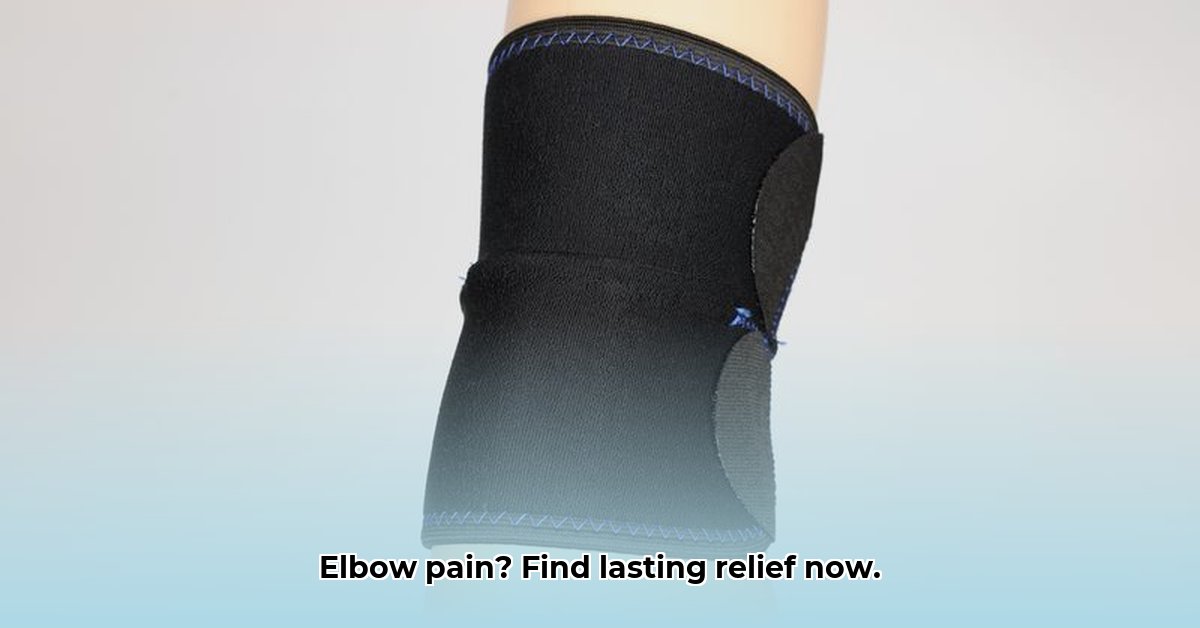Elbow pain? It’s a real bummer, stopping you from doing the things you enjoy. This guide will help you find the perfect elbow support to ease that pain and even prevent future problems. We’ll break down the different types of elbow braces – think of them like specialized elbow helpers – and show you how to choose the right one. We’ll also walk you through how to put it on correctly and avoid common mistakes. Whether you’re a weekend warrior, someone who does a lot of physical work, or just dealing with a bit of elbow discomfort, this guide will help you get back to your normal life, pain-free. For expert medical advice, consider consulting a specialist at Idaho Hand Center.
Elbow Support: Your Guide to Finding the Perfect Fit in 2025
Finding the right elbow support can feel like navigating a maze, but it doesn’t have to be by using an elbow support guide. Let’s break down the options and find the perfect fit for your needs. Think of it like finding the ideal pair of shoes – you wouldn’t wear running shoes for hiking, would you?
Identifying the Cause of Your Elbow Pain
Before you even start browsing, consider why you need an elbow support. Accurately diagnosing the cause of your elbow pain is the first step. Are you recovering from a sprain sustained after a fall? Experiencing persistent pain from overuse, potentially from tennis elbow or golfer’s elbow? Or do you require preventative support for activities that strain your elbow, such as weightlifting or construction work? Knowing the root cause of your discomfort helps you narrow down the many choices.
Common Causes of Elbow Pain:
- Tennis Elbow (Lateral Epicondylitis): Pain on the outside of the elbow, often caused by repetitive wrist and arm movements.
- Golfer’s Elbow (Medial Epicondylitis): Pain on the inside of the elbow, also caused by repetitive motions.
- Cubital Tunnel Syndrome: Compression of the ulnar nerve, causing numbness and tingling in the elbow, forearm, and fingers.
- Arthritis: Inflammation of the elbow joint, leading to pain and stiffness.
- Sprains and Strains: Injuries to the ligaments and tendons around the elbow, often caused by sudden impacts or overuse.
For example, a lightweight sleeve might be great for everyday use if you have mild arthritis, but something more substantial might be better for intense workouts where you need extra stability. Consulting with a doctor or physical therapist for a proper diagnosis is highly recommended.
Types of Elbow Supports: A Detailed Overview
The world of elbow supports offers a variety of designs, each with its purpose, such as compression sleeves and hinged braces:
- Counterforce Braces: These targeted supports apply pressure to specific tendons—think tennis elbow or golfer’s elbow—giving those areas a much-needed break and are known for their precision in pain management for these conditions. They work by reducing the strain on the affected tendons, allowing them to heal.
- Compression Sleeves: These offer gentle, consistent compression around your entire elbow, improving blood flow and reducing swelling and are ideal for general elbow aches or preventing injuries during activities or aiding recovery. They can also provide a warming effect, which may help to soothe stiff joints.
- Armbands: These give you broader support than a counterforce brace, but are less constricting than a full compression sleeve. They’re often comfortable for everyday wear and lighter activities, providing a balance of support and flexibility.
- Hinged Braces: These offer more rigid support and are often used for more severe injuries, such as ligament tears or fractures, or to help with stability after surgery. Typically, they feature hinges to help restrict movement in certain directions, protecting the elbow joint during healing.
- Elbow Sleeves with Padding: These sleeves incorporate padding around the elbow joint to protect against impacts and friction. They are popular among athletes in contact sports or individuals engaged in activities with a high risk of elbow injury.
Demystifying Materials: Choosing the Right Fabric for You
The material of your elbow support plays a big role in comfort, durability, and how long it lasts. Let’s look at some popular choices like neoprene, nylon, spandex, and newer options like bamboo:
- Neoprene: This is a sturdy, warm material known for good compression, providing excellent support and insulation. However, it might not be ideal for hot climates or intense activity because it can trap heat and cause sweating.
- Nylon: A durable and breathable option that is good for active folks because it keeps you cool and comfortable. It’s also lightweight and resistant to wear and tear.
- Spandex: This material provides flexibility and a snug fit, allowing for a full range of motion while still providing support. It’s excellent for activities requiring a range of motion and often blended with other fabrics for enhanced comfort and performance.
- Blended Fabrics: Many supports use blends of these materials to combine the best features. For example, a blend of nylon and spandex can provide both breathability and flexibility.
- Bamboo: An increasingly popular eco-friendly option, bamboo is naturally soft, breathable, and moisture-wicking. It’s a great choice for people with sensitive skin or those who prefer sustainable materials.
Look for fabrics that wick away moisture to prevent irritation and keep your skin happy, especially if you plan to wear the support for extended periods or during physical activity.
Finding the Perfect Fit: A Simple Guide
Getting the right fit with the correct elbow support sizing is key. A brace that’s too tight cuts off circulation, while one that’s too loose provides minimal to no support. Most adjustable supports have straps or closures to help you achieve your perfect fit.
Steps to find the perfect fit:
- Measure Up: Use a flexible tape measure to carefully measure the circumference of your forearm, just below your elbow joint to make elbow support measurement. Also, measure the circumference of your upper arm, just above the elbow joint.
- Consult the Chart: Check the manufacturer’s sizing chart; this chart will match your measurement to the appropriate size elbow support for finding an elbow support size chart. Sizing charts can vary between brands, so always refer to the specific chart for the product you are considering.
- Try it On (If Possible): If you’re purchasing in-store, try the support on and move your arm around. It should feel snug and supportive without feeling overly tight or restricting your movement for elbow support fitting. Pay attention to any areas where the support might rub or cause discomfort.
- Check for Comfort: Make sure the brace doesn’t rub or chafe your skin. Discomfort is a sign that something isn’t quite right for an elbow support trial. Adjust the straps or closures to achieve a comfortable and secure fit.
- Simulate Activity: Mimic the movements that typically cause you pain or discomfort. The support should provide adequate support and stability during these movements.
Placement and Compression: Finding the Right Balance
The ideal elbow support placement and level of compression are crucial for effectiveness. Some experts suggest positioning the support just below your elbow, directly over the area causing pain for targeted relief.
General Guidelines for Placement:
- Counterforce Brace: Position the strap about 1-2 inches below the elbow joint, with the pad or pressure point focused on the affected tendon.
- Compression Sleeve: Ensure the sleeve covers the entire elbow joint, providing even compression throughout the area.
- Hinged Brace: Follow the manufacturer’s instructions for proper placement, ensuring the hinges are aligned with the elbow joint.
However, the best compression level is truly individual – it’s a balance of support and freedom of movement. Experimentation and listening to your body are probably the best guides. You should feel a noticeable difference in support and pain relief, but without any numbness, tingling, or increased discomfort.
Frequently Asked Questions (FAQs)
- How long should I wear it? This varies wildly depending on the type of support, the severity of your condition, and your activity level. Consult your doctor or physical therapist for advice tailored to your specific situation. They can help you determine the right wearing schedule and duration for elbow support wear time. As a general guideline, you might wear a support during activities that aggravate your pain, and remove it when resting or sleeping.
- Can I sleep in it? Generally, no. Most experts recommend removing it at night to allow for better blood circulation and skin breathability for elbow support resting. Exceptions might be made depending on your injury and your doctor’s recommendations. If your doctor advises wearing a support at night, make sure it’s not too tight and that you monitor your skin for any signs of irritation.
- How do I clean it? Always check the manufacturer’s care instructions. Hand-washing is usually recommended to avoid damage to the materials and fasteners for elbow support maintenance. Use mild soap and water, and allow the support to air dry completely before wearing it again. Avoid using harsh detergents or bleach, as these can damage the fabric and reduce its effectiveness.
- When should I replace my elbow support? Over time, elbow supports can lose their elasticity and effectiveness. Replace your support if it becomes stretched out, worn, or no longer provides adequate support. The lifespan of a support depends on the quality of the materials and how frequently it’s used.
Making the Right Choice:
- Your Perfect Bento Box Bag For Fresh And Tidy Meals - December 2, 2025
- Korean Meal Prep Made Easy For Delicious Weekday Meals - December 1, 2025
- Korean Food Meal Prep Makes Flavorful Weekday Meals Simple - November 30, 2025










